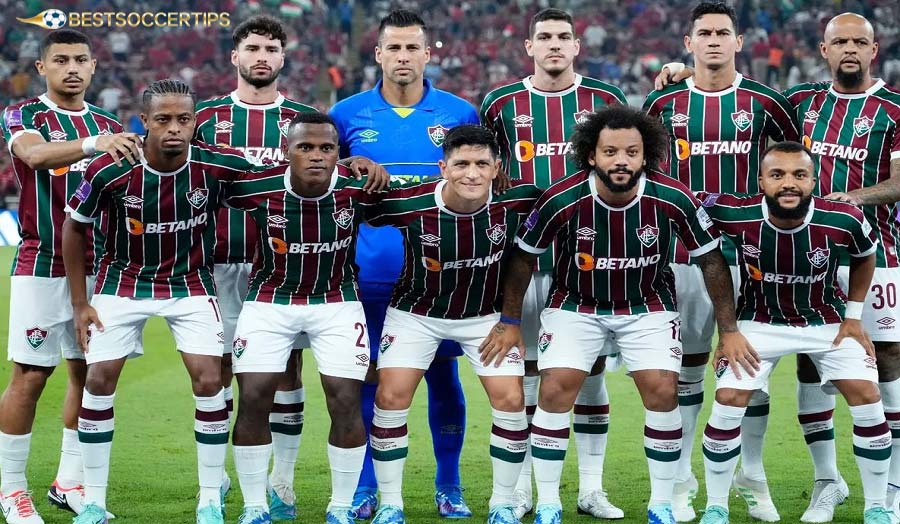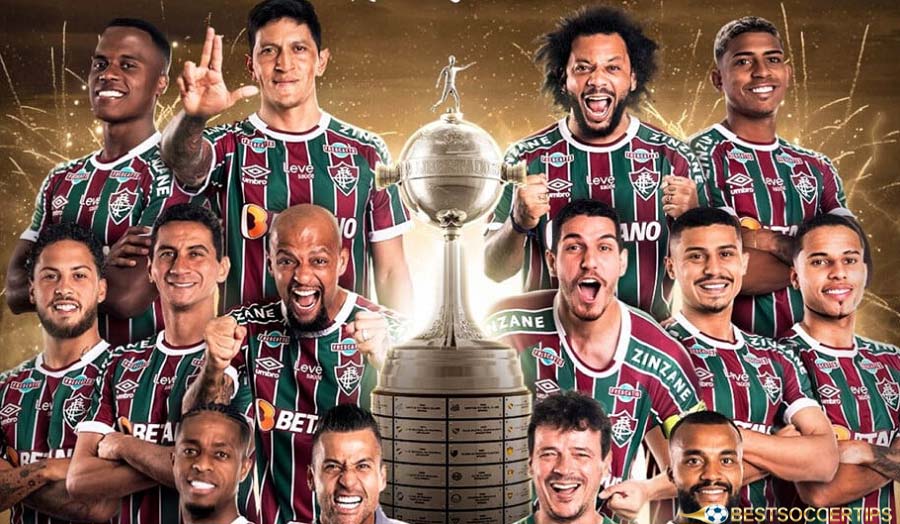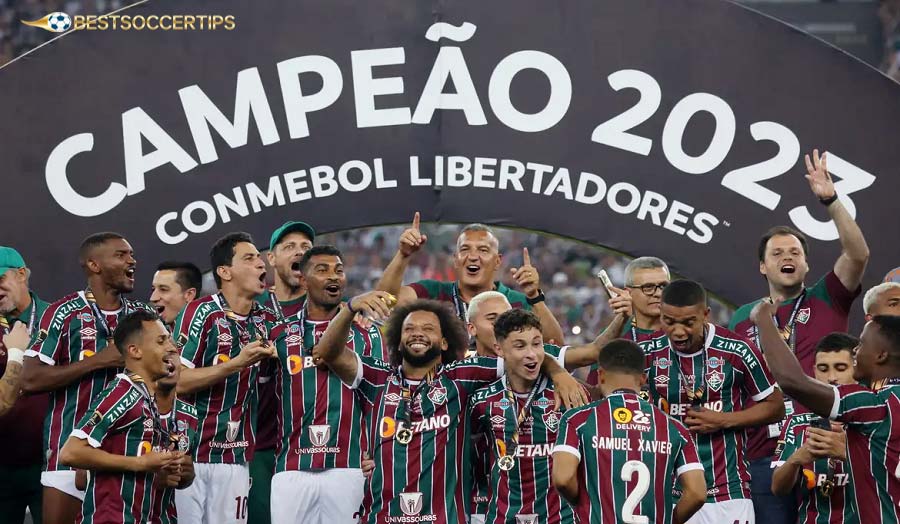Fluminense is one of the oldest and most traditional football clubs in Brazil, founded in 1902 in Rio de Janeiro. Not only famous for its national and international titles, Fluminense is also a symbol of culture, identity and pride of the city’s fans. With more than a century of history, this team has left a strong impression on fans with its resilient fighting spirit, excellent youth training and the most classic matches in South America. In this article, Bestsoccertips will explore with you more about what is Fluminense football club? the history, achievements, cultural values and future of Fluminense – a “gem” of Brazilian football.
Who is Fluminense? History and more than 100 years of history
After more than a century of formation and development, Fluminense is not only a football team but also a part of Brazilian football history. To better understand the value and influence of this club, let’s look back at their more than 100-year journey full of impressions.
The beginning of an icon (1902–1950)
Fluminense Football Club was founded on July 21, 1902 in Laranjeiras, Rio de Janeiro, by Oscar Cox – a Brazilian of British origin, who fell in love with football after studying in Europe. Initially, Fluminense was a place for the urban middle and upper classes, so it had an aristocratic style in culture and management.
Fluminense quickly became one of the first clubs to popularize football in Brazil. The team won its first Rio state championship in 1906. In the early 20th century, Fluminense dominated the region with numerous state titles.

One of the historical milestones was Fluminense hosting the first match of the Brazilian national team in 1914 at their home stadium Laranjeiras. This was a clear demonstration of the team’s stature not only at club level but also at national level.
Rise and fall, revival and belief (1950–2023)
From the 1950s to the early 1990s, Fluminense went through many turbulent periods. They had golden years (national championship in 1970, 1984), possessing stars such as Rivelino, Castilho, Carlos Alberto Torres. However, entering the 90s, the club fell into financial and professional crisis.
In 1998, Fluminense were relegated to Serie C Brazil’s third division. But with an unyielding spirit and the love of their fans, the club came back strongly, promoted one after another and in 2000, they returned to Serie A.
From 2010 onwards, Fluminense entered a period of stability with two national championships (2010, 2012). The peak came in 2023, when they won the Copa Libertadores for the first time in their history, defeating Boca Juniors in a thrilling final at the Maracanã. This was the title that brought Fluminense to the top of South America and affirmed their international class.
Cultural identity and enduring values
Fluminense not only stands out on the pitch, but also impresses with its distinct cultural identity and traditional values that have been preserved through many generations.
Colors and symbols
Fluminense stands out with its traditional jersey colors: burgundy, green and white the three colors that make up the nickname “Tricolor”. The club’s emblem is a classic shield with the letters “FFC” intertwined, symbolizing unity and history.
Unlike popular teams like Flamengo, Fluminense always maintains an elegant style, is well-organized, and aims for long-term development. This is reflected in all activities from the uniforms, the pitch, to the attitude of the players.
Stadium and fans
Fluminense uses the Maracanã stadium for big matches the most famous stadium in the world, which can accommodate nearly 80,000 spectators. However, the Laranjeiras stadium, although much smaller, is still a historical symbol it is the club’s headquarters, where important training sessions and events are held.
Fluminense’s fan base is not as large as Flamengo’s, but it is extremely loyal and civilized. Their fans tend to be better educated than average, and are very proud of the club’s history. Supporters’ clubs such as Guerreiros do Fluzão, Força Flu, regularly organize social, charitable, and cultural activities.
Refer to reputable online bookmaker to make accurate and safe choices when placing bets.
Sports achievements and club legends
Besides its cultural depth, Fluminense also affirms its position with impressive achievements and legends that have made the club’s name famous for decades.
Big Titles and Outstanding Statistics
Fluminense is one of Brazil’s most storied clubs, with an impressive record:
- Campeonato Brasileiro Série A (National Championship): 4 times – 1970, 1984, 2010, 2012
- Copa do Brasil: 1 time – 2007
- Copa Libertadores: 1 time – 2023
- Campeonato Carioca (Rio de Janeiro State Championship): 31 times – second in history behind Flamengo

Fluminense also won the Copa Rio Internacional in 1952, an early intercontinental tournament, considered by some football historians to be a precursor to the club world championships, although FIFA does not officially recognise it as the predecessor of the FIFA Club World Cup.
Legendary players and coaches
Fluminense is the birthplace or development of many stars:
- Carlos Alberto Torres – Brazil’s captain who won the 1970 World Cup
- Rivelino – one of the greatest number 10s in Brazilian football history
- Thiago Silva – world-class central defender, who grew up at Fluminense
- Fred – a modern icon, scoring more than 180 goals for the club
In addition, the club has famous coaches such as Abel Braga, who helped the team win the 2023 Copa Libertadores, and Muricy Ramalho, the strategist of the 2010 championship.
Classic derby: Fla-Flu
It is impossible not to mention “Fla-Flu” the derby between Fluminense and Flamengo. This is one of the biggest matches in the world, not only because of its professional value but also because of its social significance. Fluminense representative of tradition and intelligence; Flamengo the popular, mass football team. This confrontation usually attracts more than 60,000 spectators each time it takes place at Maracanã, creating an unprecedentedly vibrant atmosphere.
Future vision and role in modern society
Not only stopping at the glorious past, Fluminense is gradually innovating to adapt to the times, affirming its social role and moving towards a sustainable development future.
Youth training and transfer strategy
Fluminense is one of the leading youth training centers in Brazil. The club’s academy is located in the Xérem area – with strong investment in facilities and personnel. Every year, this academy trains dozens of high-quality players, some of whom go abroad to compete, bringing in large revenues.

Players such as Marcelo (Real Madrid), Fabinho (Liverpool), Gerson (Flamengo), André (Brazilian team 2024) have all played for Fluminense or come from the club’s academy.
The club aims for sustainable development by retaining young players longer, instead of selling them early to Europe. The 2023 Copa Libertadores championship is a testament to this strategic achievement.
Social role and sustainable innovation
Fluminense also stands out in the social aspect:
- Organizing sports education programs for poor children
- Collaborating with hospitals and schools in Rio in the school sports program
- Implementing the “Futebol e Respeito” campaign against racism and gender discrimination
- Digital transformation in operations management and ticket sales, aiming for a 4.0 football club
Currently, Fluminense is gradually transforming its model into a corporate club (SAF) – allowing for domestic and foreign investment, optimizing finances and expanding its international brand.
Wrapping Things Up
So through the above article, have you learned about what is Fluminense football club? Fluminense is not simply a football team. It is a historical story that spans more than a century, a model of perseverance, aspiration and innovation. From the aristocratic years of the early 20th century, to the crisis of the late 20th century, and then a strong revival in the era of global football, Fluminense’s journey reflects the history of Brazilian football. With a solid foundation in the academy, a strong identity, and strategic financial stability, Fluminense is on the way to becoming a model club of South America in the 21st century.
See more: Ranking the top 8 Palmeiras best players of all time




